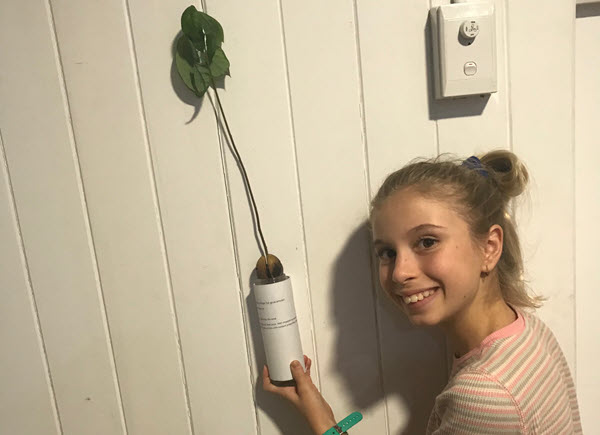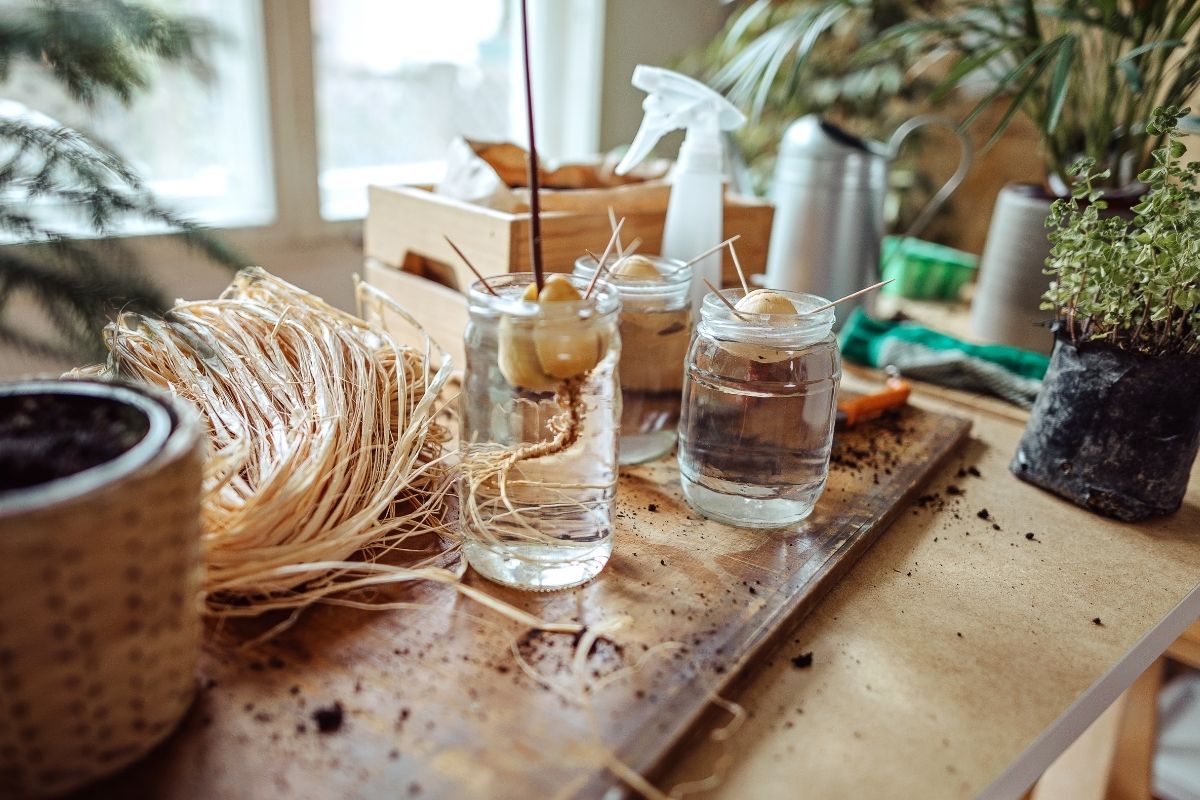Can you grow avocado indoors? Here are 6 easy steps to get your avo plant surviving and thriving
Growing an indoor avocado plant is actually easier than most people imagine and it is a lot of fun too! But I will be honest, if you want your plant to turn into a full-size fruitful tree, you will need patience and dedication.
First things first, let’s start with the baby avocado plant.
Here is a list of what you need and the steps to follow:
Avocado seeds washed – as many seeds as you wish
(hint: success rate is not 100% – so I always go for as many as I can source)
Skewers or toothpicks
Cup or jar (or any suitable container)
Water
Pot
Potting mix
How to grow avocados indoor in 6 easy steps
1. Source and prepare your avocado pits
Sourcing an avocado seed starts with sourcing an entire fruit. Getting family, friends and neighbors to save their pits for you is also an excellent and cheap idea.
I tend to have better results with organic avocados that have never been refrigerated.
Wash and clean your seed making sure all of the avocado flesh is gone.
Soak the pit overnight in room temperature or warm water.
The following day, dry the pit and let it dry for a few hours – the skin covering the pit will start to look wrinkled and you will be able to easily peel it off.
2. Prepare your pit to sprout in water
Now, it is time to transfer your pit into a cup or jar or whatever appropriate container you have.

Fill it to the top with water. I use tap water!
In this phase, it is crucial that the pointy end of the avocado stays dry and above water, while the round end where the ‘eye’ is located stays submerged.
The best way to do this is by using a skewer or two/three toothpicks that are poked through the pit. I recommend them to be placed about half an inch up into the seed.
Toothpicks will help your avocado pit stay half dry/half wet.
3. Find the right spot for your avocado pit to sprout
Warmth is an essential factor in a pit. Avocado trees are most likely to grow in sunny, warm places with lots of light.
Hence, locate a sunny, warm place within your home to place your avocado cup. The best way to stimulate the growth of your seed is to direct sunlight, however, other warm ‘artificial’ lights could do the trick.
4. Change water regularly
Once you find a good spot, it is important that you change the water regularly. Avocados, like most indoor plants – particularly hydroponic ones – love clean water. I recommend every two days.

5. Watch it sprout and grow
This process can take anywhere from two to six weeks. You will notice the pit cracking to make room for roots to grow.
If you have tried and did not succeed in getting your pit to sprout, fear not! It happens to all of us. My success rate is about fifty per cent. That’s why I recommend getting a few seeds going.
Personally, I love avocado plants as an ornamental indoor leaf-tree. So, I normally stop my avocado growing process there. However, if you are more ambitious than me, you can absolutely transfer your avocado plant to soil and, possibly later on, to an outdoor environment -provided you have the right weather conditions.
My kids and I love the idea of having a thriving vegetable garden, but life is busy! There’s only so much we can do!
Below is a great time-lapse of an avocado pit sprouting and growing:
For those of you who have the time and energy, here is the next step:
6. Transfer it to soil
Once you have a good root system (at least 2 ‘’ in length) and the foliage is looking healthy, you can transfer your baby plant to soil.
I recommend you use a pot plant with at least 12’’ in diameter as well as an organic potting mix with some sand in it as it will help with drainage.
Similarly to what you have done with water, the roots and the bottom round end of the pit should be covered by the potting mix, while the pointy end should be above ground.
Find a warm and well-lit place for your plant. Same conditions as per hydroponic stage.
It is important that the soil be moist, but not too wet. The plant should be dry before your next round of watering. You can test the soil with your finger or by inserting a wooden skewer into the dirt to check water levels.
I also recommend organic fertilizer every month and twice a month in Spring and Summer – when growth becomes more accelerated. Don’t be tempted to fertilize your plant with Bokashi tea – I killed my daughter’s avocado doing that!
While the pit to sprout stage is relatively quick, this stage requires a lot more patience as growth slows down.
Final Thoughts on growing avocados indoor
Growing baby avocado plants indoors is an achievable goal that does not require a high level of gardening skill! These plants can be wonderful houseplants for beginners, including children.
The early stages of avocado growth happen pretty quickly – making this activity very rewarding. However, to obtain a fully grown avocado, you will need a little more patience.
Frequently Asked Questions
How many types of avocados exist?
There are many – at least over fifty different types of avocados have been identified, although only a few of them are commercially available.
What is the best avocado to grow indoors?
It really depends on your environment. For example, Hass avocados are popular in California, while the Choquette variety comes from South Florida. There are also varieties a little bit more cold-tolerant such as Sharwill.
Can you use artificial light to grow avocados?
Small plants or a sprouting pit can certainly do well under grow-lights, however as trees get bigger, they became a little harder to manage under artificial light.
Where is avocado originally from?
Avocado trees have originated in central/south Mexico. It is no wonder that it is a staple food in Central America. Botanically speaking, avocados are a one-seed berry!






